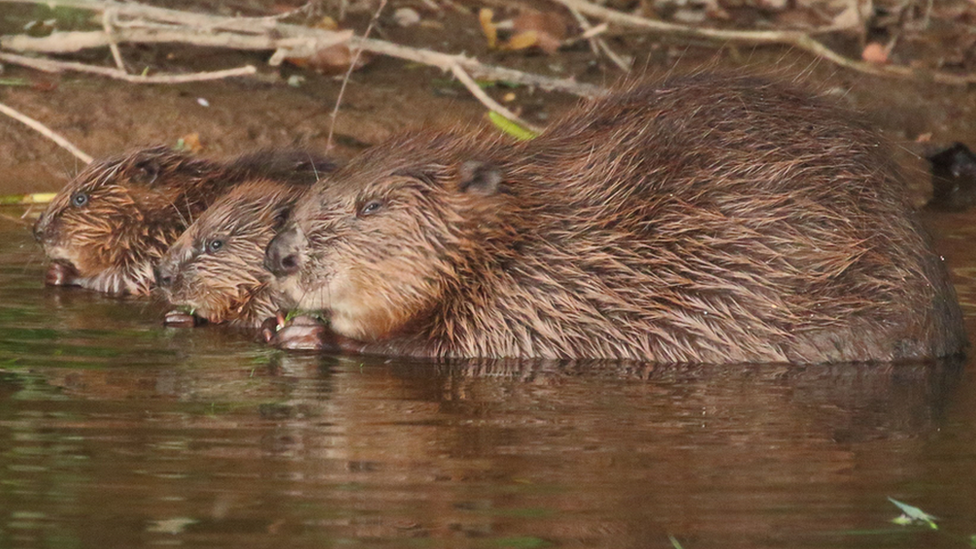Beavers key to easing impact of flood and drought

Wild beavers having been living in Devon for at least 10 years
- Published
Devon's beaver population is playing a vital role in easing the impact of flood and drought in the region, according to researchers.
Experts from the University of Exeter and Devon Wildlife Trust have spent 10 years studying the effect beavers are having on the local environment.
They found that across four separate family areas, the beaver-created wetlands were storing more than 24 million litres (5.3m gallons) of water.
Researchers said this reduced river levels flowing through downstream communities during wet weather, whilst ensuring healthy stream flows during dry spells.
'Reduced storm flows'
Dr Alan Puttock, Lecturer in Applied Nature Based Solutions at the University of Exeter said: "We have found that beaver-created wetlands contribute significantly to more resilient landscapes, reducing both the impacts of flooding and drought.
"Above flood-prone communities in the River Otter we have observed that beaver-created wetlands have significantly reduced storm flows.”
Devon Wildlife Trust is now using the research findings to make the case for creating more space for beavers and their wetlands.
'Reward land managers'
The charity is also hoping to unlock more funding to compensate land owners who agreed to turn grazing land into habitats for beavers.
The Trust’s Green Finance Officer, Dr Holly Barclay, said: "We need to provide space along our waterways for beavers to live and create their wetlands.
"That's why we are developing new funding streams which can reward land managers for the benefits they are providing to society - including flood and drought alleviation - by allowing beaver wetlands to develop on their land.
Wild beavers were found living in the River Otter in east Devon 2014 and given the legal right to stay in 2020.
The Devon Wildlife Trust monitors the animals and estimated the rodents are now living in 20 separate family territories along the river and its tributaries.
Follow BBC Devon on X (formerly Twitter), external, Facebook, external and Instagram, external. Send your story ideas to spotlight@bbc.co.uk, external.
Related topics
- Published6 August 2020
